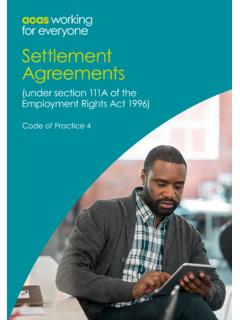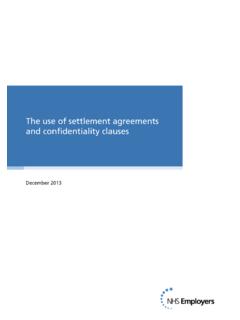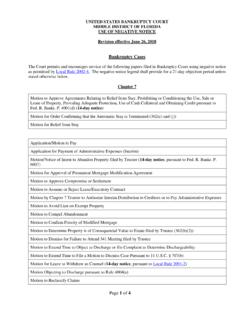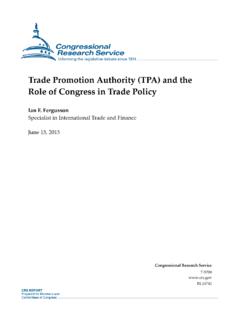Transcription of ar.1.Corporate Lit Joint Defense Agreements - Cray•Huber
1 DEFENDANTS, CAN'T WE ALL JUST GET ALONG? . STRATEGIES FOR A PEACEFUL CO-EXISTENCE WITH. DEFENDANTS IN COMPLEX MULTIPARTY LITIGATION: BEYOND Joint Defense Agreements . James K. Horstman Co-Author Lori E. Iwan Cray Huber Horstman Heil & VanAusdal LLC. 303 West Madison, Suite 2200. Chicago, Illinois 60606. James Horstman is a partner of Cray Huber Horstman Heil & VanAusdal LLC. He specializes in appeals and insurance coverage litigation in federal and state courts. Mr. Horstman is a member of the DRI, the Appellate Lawyers Association and the Federation of Insurance and Corporate Counsel. Lori Iwan is a former principal in the firm of Cray Huber Horstman Heil & VanAusdal LLC, a Chicago-based law firm with a national civil trial practice.
2 She is a member of the Law Institute of the Defense Research Institute, is the Assistant Dean of the Litigation Management College of the FICC, and serves as the Chair of the Products Liability Section of the FICC. I. Introduction The only thing worse than having to fight off a plaintiff's attorney at trial is to have to watch your back from co-defendant's counsel in complex multi-party litigation. Any time the plaintiff interjects into a lawsuit the competing interests of manufacturers, designers, upstream suppliers, downstream distributors, middlemen, retailers, installers and users of product, the possibility of conflicting positions among the defendants arises with the potential for disaster at trial.
3 One need only do a quick survey of any jurisdiction to identify cases where defendants fought and plaintiffs profited. Savvy plaintiffs' attorneys encourage finger- pointing and infighting among defendants to lighten the plaintiff's burden and drive-up the verdict. This article suggests strategies to enable defendants to peacefully co-exist in multi-party cases and avoid financial disasters at trial. While the focus of this article is on product liability litigation, the principles apply equally well to other types of litigation, such as medical liability, employment and commercial contract disputes. II. What's the Problem?
4 Generally speaking, the problem in multi-party commercial cases is that co-defendants, who at one time were all working toward a common end, have, for various reasons, determined that their explanation of the events is at cross- purposes with the co-defendants in litigation. For example, a medical device sales representative sells a new orthopedic rod for the internal fixation of a femur fracture and proceeds to assist the orthopedic surgeon on his first use of the rod in the operating room. The rod later fails. The manufacturer claims an installation error and points at the doctor, while the doctor points back claiming the product failed due to metal fatigue and manufacturing defects.
5 Having failed to reconcile the views of what went wrong in the case, the defendants point the finger at each other while the plaintiff sits back and waits for a large verdict. In a second example, a multi-vehicle accident results in claims against the drivers, the vehicle manufacturer, and the child car seat manufacturer, after a child is seriously injured. At trial, rather than reconcile the evidence into one cohesive Defense , the defendants point fingers at each other claiming defective design and negligence by the co-defendants proximately caused the injuries to the minor child. Again, plaintiff profits. Conflicts among defendants can insidiously creep into a case when you least expect it.
6 Hence, it behooves Defense counsel to be aware of the possible situations that can give rise to a conflict among defendants and to address these situations early in the litigation. A. Voir Dire Although counsel may not recognize the impact that some innocently posed questions may have during voir dire, certain types of issues do set the defendants against each other. For example, asking questions about a manufacturer compared to a retailer can create a distinction in the jurors minds that prejudices them into believing that there is a different degree of culpability on one or the other parties. B. Expert Disclosures In an abundance of caution, defendants oftentimes name experts in specialties that overlap with the co-defendants' specialties "just in case" the defendants turn on them and begin to criticize Defense counsel's client at deposition or trial.
7 This cautious, preventive practice sends a signal to co- defendants that the defendants may be at odds with each other in the litigation, immediately heightening the level of awareness and intensity of attack on co- defendants. C. Opening Statement/Closing Argument Plaintiff's counsel conveniently mentions during the opening statements or closing arguments that "something must have gone wrong in the case" because the defendants cannot agree on the facts or who was the culpable party. The only place this type of ammunition comes from is if a defendant has testified against a co-defendant. The preparation of the defendant for deposition is a critical element of any Defense case and the need to protect a co-defendant's position as part of the overall case strategy should not be overlooked.
8 D. Discovery Oftentimes, rather than informally obtain information necessary for one defendant's case, Defense counsel sends formal written discovery to a co- defendant, or worse yet, engages in an aggressive line of questioning at the co- defendant's deposition. This type of conduct sends the wrong message to the co- defendant and raises a red flag regarding where defendant's loyalties lay. E. Experience of Counsel or the Claims Handler Inexperienced counsel or claims handlers may mistakenly believe that in order to save their own client they need to point the finger at a co-defendant. This is rarely the case. Creative thinking can generate a position that reconciles all facts without blaming a defendant in all but the rare malpractice case.
9 F. Reporting Requirements The filing of a report pursuant to statutory reporting requirements regarding injuries related to a product could cause the product manufacturer to think that the defendant is taking an inconsistent position than that which is likely to be advanced on behalf of the manufacturer. For example, if the malpractice involves the use of a medical device, a Medical Device Report may need to be filed with the FDA. (See 21 CFR ) An event which must be reported has occurred when the treatment facility becomes "aware of information that reasonably suggests that a device has or may have caused or contributed to a death or serious injury".
10 21 CFR (q)(1). Events involving pharmaceutical products may trigger a requirement to notify the FDA or the manufacturer of the event. Similarly, the Consumer Product Safety Commission accepts voluntary reports regarding consumer reports. Absent a statutory requirement, a defendant seeking to alert a manufacturer or governmental agency of a potential problem with a product, may send the wrong message regarding that defendant's position in litigation by having aired its concerns about a product publicly. G. Pleadings Some states require that counterclaims be filed by defendants during the pendency of the main action in order to preserve contribution rights or allocations of fault.







